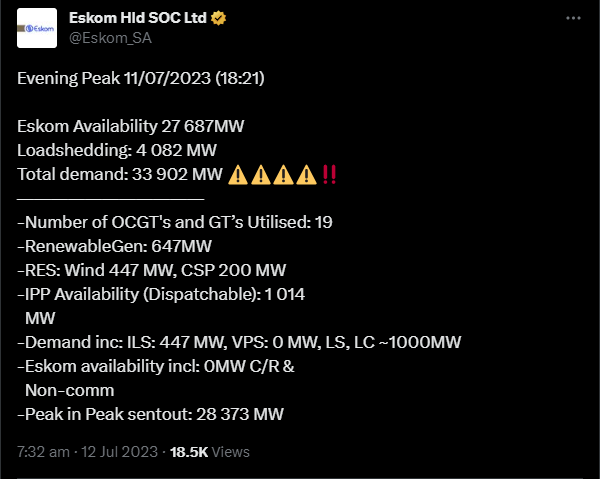Ok, I thought about it all. The posts above, no LS, 24h later LS.
Think we are way too kind and are being bamboozled.
What are the decade-old steps for this winter in and around LS reasoning?
Let me quote: On Sunday he said:
- “will not experience the worst-case scenario”.
- “We are surpassing our expectations in relation to the performance of the units and we are more than confident that we should be able to survive the winter,” he said.
- Load reduces and LS levels drop, the Minister “brags” he’s “dunnit, saved the day, no more LS”. It is also cooler, so look how well the stations perform. Like maybe “the others did it wrong … ?”
- Gets really cold, the load increases, helloooo, it is winter(!) and wham, “out of the blue”, magically, having done no maintenance in winter as stated, the inevitable “repeat phrases” … “loss of additional generating units overnight” … “unplanned losses” …
- Followed by “ginormous diesel usage” …
- And we hit stage 6 … with additional levels planned for by ESKOM!
Now guys, with all and everything being said, having been said … why do we keep on mansplaining to each other that this is getting better? It is NOT!
No new builds, no maintenance, reduction in load, who knows really, maybe it is because of businesses closing?
Eskom, the base/core supplier of power, like when it snows, cannot supply. They can nurse it, make it sound and look good, but Eskom, the base/core power supplier of SA cannot supply SA when there are adverse weather conditions.
Until alternative supplies can take up the shortfall every time all the time, weather or no weather, can send power from one side to the other side of the country, bigg-ass-batteries, we may have respites of LS, but NOTHING is getting better as Eskom, the base/core load supplier of SA, is broken. No nice words can mansplain that away.
More “loss of additional generating units overnight” … “unplanned losses” … are just inevitable.
NOTHING is getting better ito the base/core load until alternative suppliers can take over one EOL power station after another.
Now the problem is … to get the alternative sources in place, to carry SA through everything, will not happen by end of 2023, or 2024, or 2025 … Karpower just a bandaid, to pay for elections.
A “Radical Electricity SA Plan” (RESAP) is needed. It involves every single person in SA.
